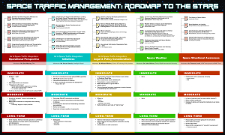Start Date
13-11-2015 1:45 PM
Abstract
Weather support to space launch operations, while similar to that for traditional aviation, presents significant additional challenges. Embry-Riddle Aeronautical University (ERAU) currently offers three courses in traditional aviation meteorology, two needed by aeronautical science students seeking private pilot through airline transport pilot (ATP) FAA certifications, and one to provide meteorology majors with operational experience supporting an actual air race. However, with the advent of a new degree program in Commercial Space Operations (CSO), the need to modify and extend traditional aviation weather instruction to include space launch weather requirements has become increasingly important. While the traditional aviation meteorology coursework is beneficial, it does not cover the full-spectrum of weather impacts on space launch and suborbital space flight operations that both CSO and meteorology students will need. To address this challenge, ERAU (with guidance from the 45th Weather Squadron at Patrick Air Force Base) is working to create a new course focused on weather support to these operations, utilizing the new suborbital space flight simulator and lab housed in the Department of Applied Aviation Sciences. This presentation explores the operational considerations of transitioning traditional terrestrial aviation weather instruction to a suborbital space flight weather support course. These considerations include: more stringent spacecraft and system weather sensitivities, triggered lightning, vertical wind-shear profile analysis, attention to atmospheric conditions above the troposphere, and space weather impacts.
Area of Interest
Weather Impacts

Transitioning Traditional Aviation Weather Instruction to a Space Launch Weather Support Course: Operational Considerations
Weather support to space launch operations, while similar to that for traditional aviation, presents significant additional challenges. Embry-Riddle Aeronautical University (ERAU) currently offers three courses in traditional aviation meteorology, two needed by aeronautical science students seeking private pilot through airline transport pilot (ATP) FAA certifications, and one to provide meteorology majors with operational experience supporting an actual air race. However, with the advent of a new degree program in Commercial Space Operations (CSO), the need to modify and extend traditional aviation weather instruction to include space launch weather requirements has become increasingly important. While the traditional aviation meteorology coursework is beneficial, it does not cover the full-spectrum of weather impacts on space launch and suborbital space flight operations that both CSO and meteorology students will need. To address this challenge, ERAU (with guidance from the 45th Weather Squadron at Patrick Air Force Base) is working to create a new course focused on weather support to these operations, utilizing the new suborbital space flight simulator and lab housed in the Department of Applied Aviation Sciences. This presentation explores the operational considerations of transitioning traditional terrestrial aviation weather instruction to a suborbital space flight weather support course. These considerations include: more stringent spacecraft and system weather sensitivities, triggered lightning, vertical wind-shear profile analysis, attention to atmospheric conditions above the troposphere, and space weather impacts.



Comments
Thomas Guinn’s Bio